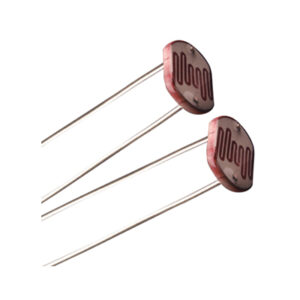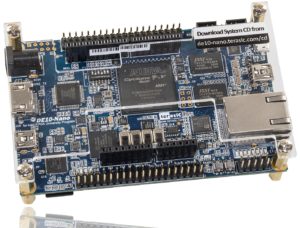
Capacitor is a device, which stores charges in the form static electric field, may be considered as a rechargeable battery. Capacitor is a passive component since it doesn’t generate any energy of its own. It is a two-terminal device, consists of two conducting plates, separated by an electrical insulator(dielectric material).
Capacity to store charges is measured as capacitance, the ratio of the amount of charges (Q) on either conductor to the potential difference developed due to the storage of charges between the two conductors.
C = Q/V (Culombs/ volts)
Capacitance is measured in Farads(F). Capacitance is a bigger unit to measure. Hence sub-multiples of the Farad, such as micro-farad(1μF = 10-6 F), nano-farad(nF = 10-9 F), pico-farad(pF = 10-12 F)
Symbols of capacitors:

Capacitors are mainly divided into fixed capacitor which is of fixed capacitance and variable capacitor in which the capacitance can be changed.
Series and parallel connection of capacitors.
Series connection

When capacitors are connected in parallel, the magnitude of the charges stored in each capacitor remains the same but the potential differences developed across the capacitors due to charges stored are different. The reciprocal of the total capacitance of capacitors in series is the sum of the reciprocal of the capacitance of each capacitor.
1/C = 1/C1 + 1/C2 +1/C3
Parallel connection

When capacitors are connected in parallel, the potential difference(V) across each capacitor is same but the charges(Q) stored in each capacitors are different. The total capacitance of capacitors in parallel connection is the sum of the capacitance of all the capacitors.
C = C1+C2+C3+C4
Capacitors are used in electronics and electrical circuits.
- In electronics circuits, small capacitance value capacitors are used.
- In electrical circuits, large capacitance value capacitors are used.
Applications:
storing energy in low power applications, smoothening DC voltage after rectifier, spike arresters, coupling and decoupling between signals, noise filtering and so on.
Types of Capacitors:
Widely the capacitors are classified based on the dielectric materials used.
Ceramic capacitor:

Ceramic capacitors are also called disc capacitors. Single ceramic discs of around 3 – 6mm are used when low capacitance values are needed. Since the dielectric constant is high capacitance can be achieved with a smaler size. The value of these capacitors ranges from a few picofarads to around 0.1 microfarads. Ceramic capacitors have low voltage ratings. These are cheap also has low leakage.
It is used in PCB boards, power circuit breakers, transmitter stations etc…
Mica capacitor:

The dielectric material used is mica. It is more stable and reliable and high precision which is available from different ranges from low to high voltage. Widely used in low capacitance and high accuracy circuits. It ranges from 20 picofarads to 10 microfarads.
Used in power RF circuits, tuned circuits, coupling circuits, resonance circuits, etc.
Paper capacitor:

The dielectric material used is paper. It has fixed capacitance hence it stores fixed amount of electric charge. Its capacitance ranges from 1 nanofarad to 1 microfarad.
Used in high voltage and high current application circuits, noise filtering , signal coupling, remote sensing, etc.
Film capacitor:

The dielectric material used is film type. It provides stable capacitance and has high performance. Its capacitance ranges from below 1 nanofarad to 30 microfarads.
It is used in hold circuits for ADCs, oscillatory circuits, coupling and decoupling of power electronic circuits, etc.
Electrolytic capacitor:

Electrolytic types of capacitors are polarized, meaning that the correct polarity must be used for the DC voltage applied to the capacitor. It has a large capacitance value but of smaller in size. Since these capacitors are polarized they can’t have AC supply. It ranges from 1 microfarad to several thousand microfarads.
It is mainly used for coupling signals, storing energy in low power applications etc.






